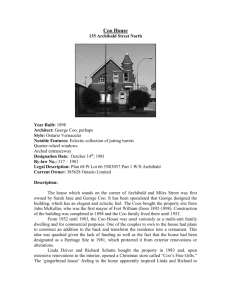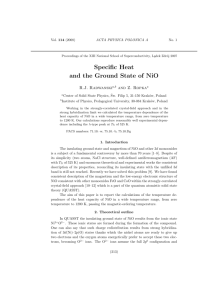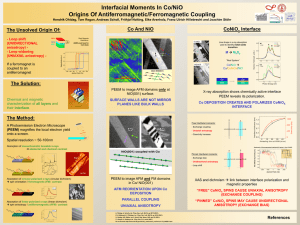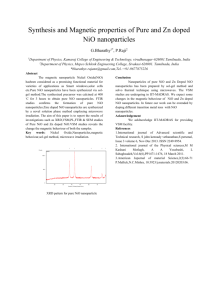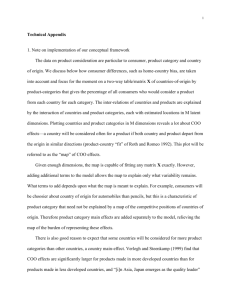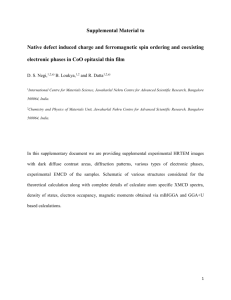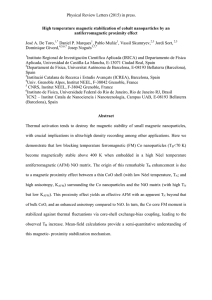View
advertisement
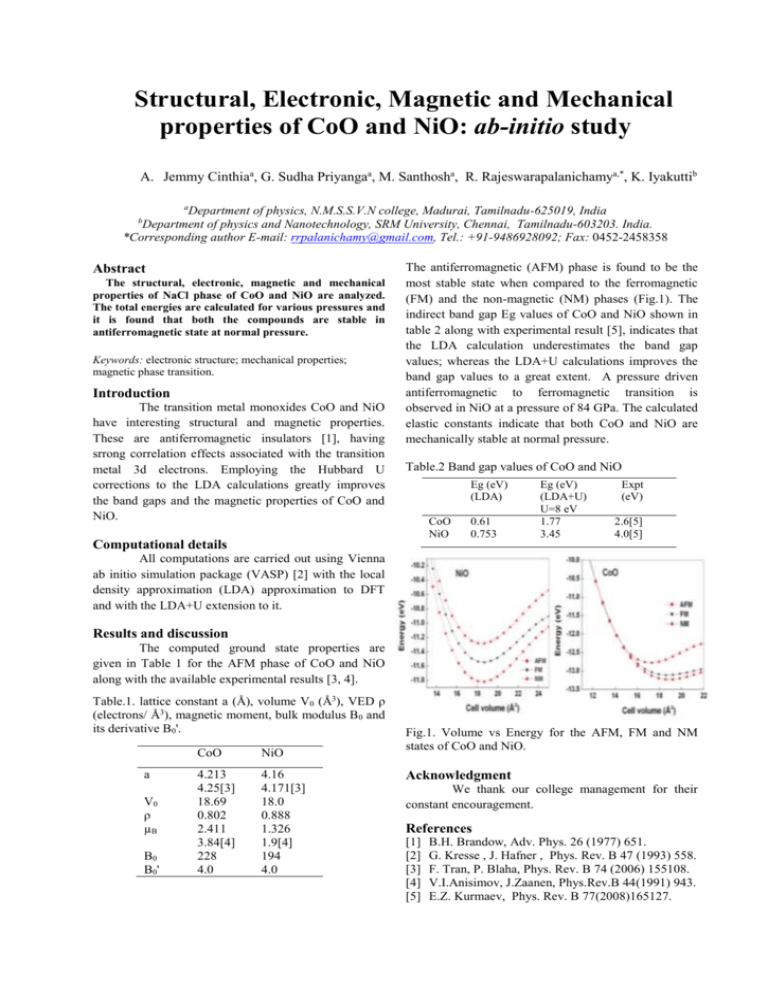
Structural, Electronic, Magnetic and Mechanical properties of CoO and NiO: ab-initio study A. Jemmy Cinthiaa, G. Sudha Priyangaa, M. Santhosha, R. Rajeswarapalanichamya,*, K. Iyakuttib a Department of physics, N.M.S.S.V.N college, Madurai, Tamilnadu-625019, India Department of physics and Nanotechnology, SRM University, Chennai, Tamilnadu-603203. India. *Corresponding author E-mail: rrpalanichamy@gmail.com, Tel.: +91-9486928092; Fax: 0452-2458358 b Abstract The structural, electronic, magnetic and mechanical properties of NaCl phase of CoO and NiO are analyzed. The total energies are calculated for various pressures and it is found that both the compounds are stable in antiferromagnetic state at normal pressure. Keywords: electronic structure; mechanical properties; magnetic phase transition. Introduction The transition metal monoxides CoO and NiO have interesting structural and magnetic properties. These are antiferromagnetic insulators [1], having srrong correlation effects associated with the transition metal 3d electrons. Employing the Hubbard U corrections to the LDA calculations greatly improves the band gaps and the magnetic properties of CoO and NiO. The antiferromagnetic (AFM) phase is found to be the most stable state when compared to the ferromagnetic (FM) and the non-magnetic (NM) phases (Fig.1). The indirect band gap Eg values of CoO and NiO shown in table 2 along with experimental result [5], indicates that the LDA calculation underestimates the band gap values; whereas the LDA+U calculations improves the band gap values to a great extent. A pressure driven antiferromagnetic to ferromagnetic transition is observed in NiO at a pressure of 84 GPa. The calculated elastic constants indicate that both CoO and NiO are mechanically stable at normal pressure. Table.2 Band gap values of CoO and NiO Eg (eV) (LDA) CoO NiO 0.61 0.753 Eg (eV) (LDA+U) U=8 eV 1.77 3.45 Expt (eV) 2.6[5] 4.0[5] Computational details All computations are carried out using Vienna ab initio simulation package (VASP) [2] with the local density approximation (LDA) approximation to DFT and with the LDA+U extension to it. Results and discussion The computed ground state properties are given in Table 1 for the AFM phase of CoO and NiO along with the available experimental results [3, 4]. Table.1. lattice constant a (Å), volume V0 (Å3), VED ρ (electrons/ Å3), magnetic moment, bulk modulus B0 and its derivative B0'. a V0 ρ µB B0 B0' CoO NiO 4.213 4.25[3] 18.69 0.802 2.411 3.84[4] 228 4.0 4.16 4.171[3] 18.0 0.888 1.326 1.9[4] 194 4.0 Fig.1. Volume vs Energy for the AFM, FM and NM states of CoO and NiO. Acknowledgment We thank our college management for their constant encouragement. References [1] [2] [3] [4] [5] B.H. Brandow, Adv. Phys. 26 (1977) 651. G. Kresse , J. Hafner , Phys. Rev. B 47 (1993) 558. F. Tran, P. Blaha, Phys. Rev. B 74 (2006) 155108. V.I.Anisimov, J.Zaanen, Phys.Rev.B 44(1991) 943. E.Z. Kurmaev, Phys. Rev. B 77(2008)165127.

